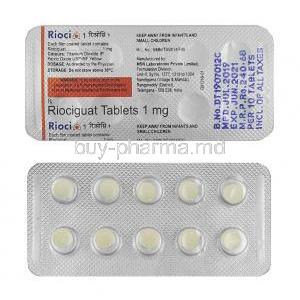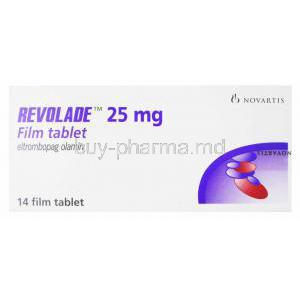Everenzo
- I. Introduction
- II. Composition of Evrenzo
- III. Uses of Evrenzo
- IV. Off-Label Use of Evrenzo
- V. How Evrenzo Works
- VI. Dosage and Administration
- VII. Common Side Effects of Evrenzo
- VIII. Serious Side Effects and Adverse Reactions
- IX. Interaction with Other Medications
- X. Warnings and Precautions
- XI. Important Precautions
- XII. Administration to Elderly
- XIII. Administration to Pregnant Women and Nursing Mothers
- XIV. Administration to Children
- XV. Handling and Storage of Everenzo
- XVI. Overdose Management
- XVII. Careful Administration
I. Introduction
Evrenzo is a medicine used in adults to treat the symptoms of anemia (low red blood cell counts) caused by chronic kidney failure (long-term, progressive decrease in the ability of the kidneys to work properly). It contains the active substance roxadustat123.
II. Composition of Evrenzo
-
Evrenzo 20 mg film-coated tablets:
- Roxadustat: 20 mg
- Lactose: 40.5 mg
- Allura Red AC aluminium lake: 0.9 mg
- Soya lecithin: 0.21 mg
-
Evrenzo 50 mg film-coated tablets:
- Roxadustat: 50 mg
- Lactose: 101.2 mg
- Allura Red AC aluminium lake: 1.7 mg
- Soya lecithin: 0.39 mg

III. Uses of Evrenzo
- Therapeutic Indication: Evrenzo is indicated for the treatment of adult patients with symptomatic anemia associated with chronic kidney disease (CKD)1.
IV. Off-Label Use of Evrenzo
Despite its approved uses, Evrenzos' versatility also extends to exploring applications. Evidence from real-world cases and research that backs off-label use sheds light on its potential, in situations outside of its approval, opening doors to new and innovative treatment approaches.
V. How Evrenzo Works
- **Evrenzo and HIF: **Evrenzo's active ingredient, roxadustat, works by increasing the level of a molecule called hypoxia-inducible factor (HIF). When oxygen levels are low, HIF levels rise naturally, signaling the body to ramp up EPO production. Evrenzo mimics this effect by inhibiting an enzyme (HIF-PH) that degrades HIF, essentially allowing more HIF to accumulate.
- Increased Red Blood Cell Production: The elevated HIF levels then stimulate the body to produce more EPO. This, in turn, signals the bone marrow to increase red blood cell production.
- Improved Oxygen Delivery: With more red blood cells circulating, they can carry more oxygen throughout the body, alleviating the symptoms of anemia like fatigue and weakness.
- Iron Availability: Evrenzo also offers an additional benefit. It helps regulate a hormone called hepcidin, which can suppress iron availability. By reducing hepcidin, Evrenzo indirectly improves iron absorption and utilization for red blood cell production.
VI. Dosage and Administration
- Dosage is individualized: The exact dose of Evrenzo will depend on several factors, including your weight, whether you are on dialysis, and your hemoglobin (Hb) levels.
- Three times a week: Evrenzo tablets are taken orally, three times a week, but not on consecutive days.
- Target Hb levels: The goal of Evrenzo treatment is to achieve and maintain hemoglobin levels between 10 and 12 g/dL. Your doctor will monitor your Hb levels and adjust the dosage as needed.
- Maximum recommended dose: There's a maximum recommended dose for Evrenzo.
- For patients not on dialysis: This is the lower of 3 mg/kg body weight or 300 mg.
- For patients on dialysis: This is the lower of 3 mg/kg body weight or 400 mg.
- Missed dose: If you miss a dose and there's more than a day before the next scheduled dose, take the missed dose as soon as possible. If it's within one day of the next dose, skip the missed dose and take the next one on schedule.

VII. Common Side Effects of Evrenzo
- Common Side Effects (more than 1 in 10 people):
- Hypertension (high blood pressure)
- Vascular access thrombosis (blood clots in dialysis access) - especially for patients on dialysis
- Diarrhea
- Peripheral edema (swelling, especially in ankles and feet)
- Hyperkalemia (high blood potassium levels)
- Nausea (feeling sick)
VIII. Serious Side Effects and Adverse Reactions
Occasionally, Evrenzo can trigger serious reactions requiring immediate and effective emergency actions to manage any negative outcomes.
- Serious Side Effects (less common, but require immediate medical attention):
- Blood clots:
- Deep vein thrombosis (DVT) - blood clot in a deep vein, usually in the leg
- Pulmonary embolism (PE) - blood clot in the lungs
- Vascular access thrombosis (VAT) - blood clot in the blood vessels associated with dialysis (more common in dialysis patients)
- Seizures
- Blood clots:
IX. Interaction with Other Medications
Evrenzos background in pharmacology involves understanding how different medications interact and any reasons they should not be used together, highlighting the importance of checking patients' medication histories to address challenges related to taking multiple medications. This attention to detail helps ensure that medications are administered in a way that works well with treatments, improving patient results while reducing the risk of conflicting effects on how drugs are absorbed and processed in the body.
X. Warnings and Precautions
During the healing process with Evrenzo it's important to proceed with caution. There are situations where using Everenzo could lead to negative effects. These situations include are not limited to having a strong sensitivity to any of its components. Moreover, specific groups of patients may face risks, so it's crucial to know their medical background before prescribing it. A detailed list of conditions to avoid responses and special cautions for at-risk groups is necessary.

XI. Important Precautions
Following a set of precautions diligently can greatly reduce the potential risks linked to Everenzo. It is recommended that healthcare providers regularly perform evaluations to confirm the ongoing appropriateness of the medication. This careful monitoring also includes staying alert for any side effects or potential interactions with other drugs. Implementing measures to minimize risks and continuously assessing patients to modify treatment as needed are essential practices in ensuring optimal care.
XII. Administration to Elderly
When dealing with individuals it's important to adjust the way Everenzo is given to them. Changes in dosage might be needed due, to the changes that come with aging. It's crucial to keep an eye out for any side effects as older people can react more strongly to certain medications. Also, we need to take into account how the body processes drugs differently in seniors. Keeping an eye on how well the drug is tolerated and its effectiveness is key.
XIII. Administration to Pregnant Women and Nursing Mothers
During pregnancy or while breastfeeding it is essential to assess the risks and benefits of using Everenzo. The safety considerations for this group are crucial. It is usually recommended to explore other treatment options unless the benefits significantly outweigh any possible risks. It's important to evaluate Everenzos safety in these delicate circumstances and consider alternative treatments if using Everenzo poses too many risks.
XIV. Administration to Children
When it comes to children it's crucial to be extra careful with using Everenzo. The dose needs to be right based on the childs age, weight and how serious the condition is. The main goal is to make sure Everenzo is safe and works well for kids who're both sensitive and react differently to medicines. Specific dosing instructions, for ages help achieve the best treatment results. Thorough safety checks are done to ensure Everenzo is safe for children.
XV. Handling and Storage of Everenzo
Achieving the results with Everenzo relies on how it's given clinically and how it's stored and handled correctly. It's crucial to store the medication to prevent it from breaking down, thus preserving its effectiveness. Both healthcare providers and patients need to understand these guidelines to maintain the quality of the medication throughout its lifespan, including specifying storage temperatures and conditions and following protocols to prevent contamination or deterioration.
XVI. Overdose Management
In cases of taking much Everenzo, it's important to act quickly and knowledgeably. Being able to spot the signs of an overdose can help in starting the treatments, which may include using antidotes. The main goal is to support the patient's condition and lessen the effects of an overdose. Recognizing overdose symptoms. Providing immediate care guidelines. Use of antidotes when necessary.
XVII. Careful Administration
The Everenzo management requires adherence to set rules to prevent mistakes and issues. This involves not giving the right doses at the right times but also understanding the overall medical situation, such as possible drug interactions and individual patient factors that could affect treatment effectiveness. Following administration guidelines improves safety and effectiveness of treatment. Being cautious about errors, in giving medications.










